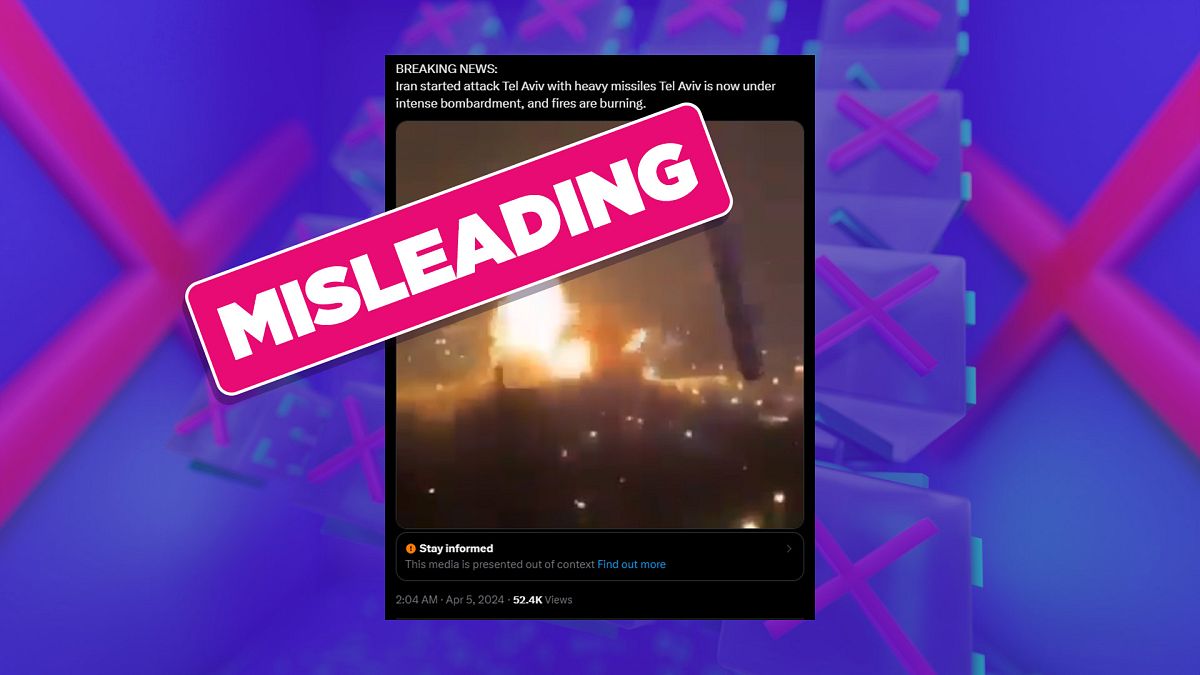No, Iran has not started attacking Tel Aviv
A miscaptioned video has been doing the rounds on social media, allegedly showing an Iranian missile strike on Tel Aviv, and was even promoted as legitimate by X’s new AI chatbot. The Cube investigates. A misleading video is circulating online, allegedly showing a barrage of Iranian strikes on the Israeli city of Tel Aviv earlier […]


A miscaptioned video has been doing the rounds on social media, allegedly showing an Iranian missile strike on Tel Aviv, and was even promoted as legitimate by X’s new AI chatbot. The Cube investigates.
A misleading video is circulating online, allegedly showing a barrage of Iranian strikes on the Israeli city of Tel Aviv earlier in April, which has supposedly gone up in flames.
But not everything is as it seems.
The video is usually accompanied by some sort of caption describing intense missile strikes that have caused widespread destruction.
“The fires of hell are burning”, one such post says.
It was shared in this context just after Israel attacked the Iranian embassy in Damascus, Syria on 1 April, killing various Iranian officials.
The story was even promoted on X’s main feed with the headline: Iran Strikes Tel Aviv with Heavy Missiles. However, the story was false.
The video actually shows a missile strike by Ukraine against the Russian-occupied city of Sevastopol in Crimea in March of this year.
The Cube checked this through a reverse image search, which confirmed that the video was first shared online in the context of a Ukrainian attack last month.
News outlets across the world reported on the video as such, some attributing it to official Ukrainian sources.
The Ukrainian military said that it had hit two Russian warships in the Black Sea as part of the strikes.
Fake news promoted by X’s new AI chatbot
Other fact-checkers have been quick to denounce X’s role in promoting the story.
They found that the fake headline that appeared on X’s trending feed was apparently generated by its official AI chatbot, Grok.
They explained that Twitter, as the platform used to be called, had a team of human editors that would curate news and put trends in context as they emerged.
However, Elon Musk axed the written context and the human team when he took over the company in 2022.
The context given to trending topics on the explore page is now set to make a return, only it’s now written by Grok, rather than human editors, according to fact-checkers.
They said it appeared that X’s algorithm noticed a potential trend as it noticed more and more accounts sharing the misleading video.
Grok then supposedly devised a few lines of context to accompany the story, based on the posts, along with the fake headline.
It’s worth highlighting that X has specified that Grok is a work in progress and can make mistakes, but such an error can have serious consequences and shows the dangers of relying too much on artificial intelligence.














